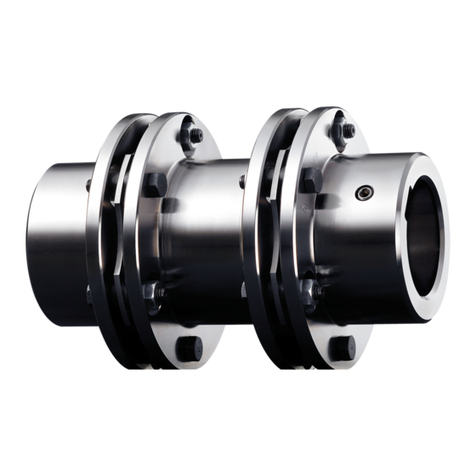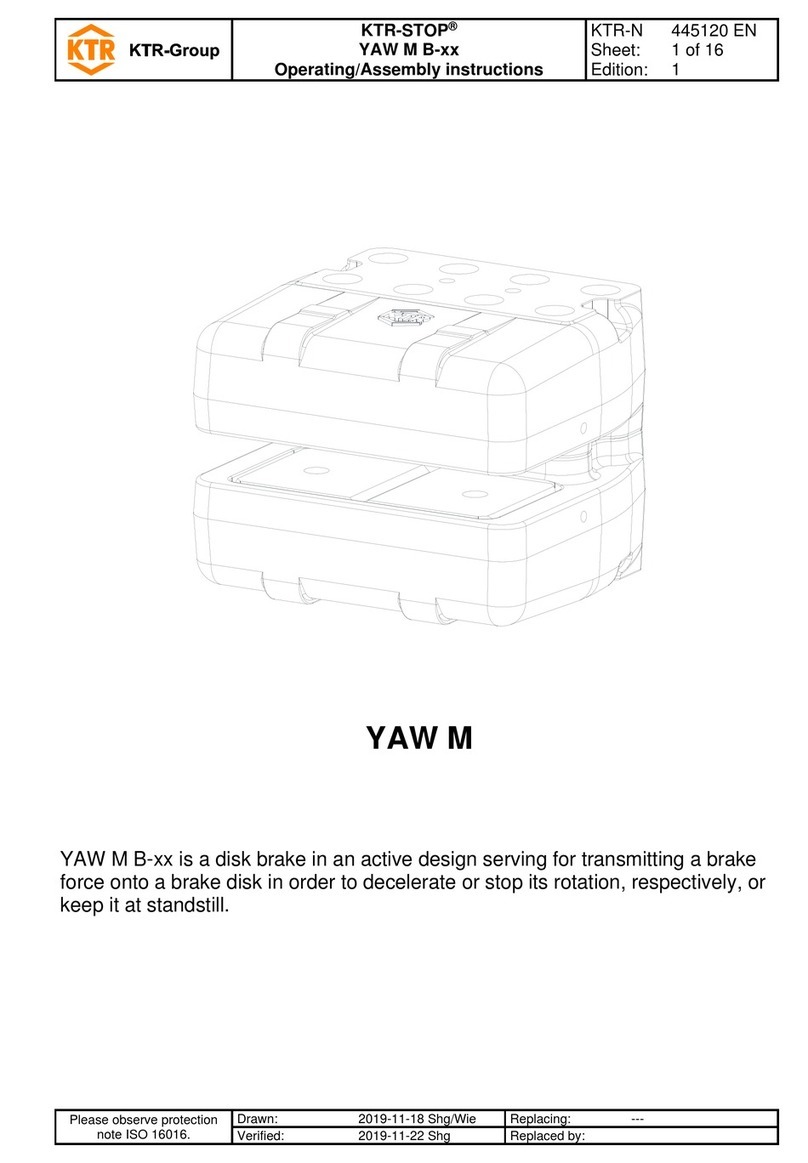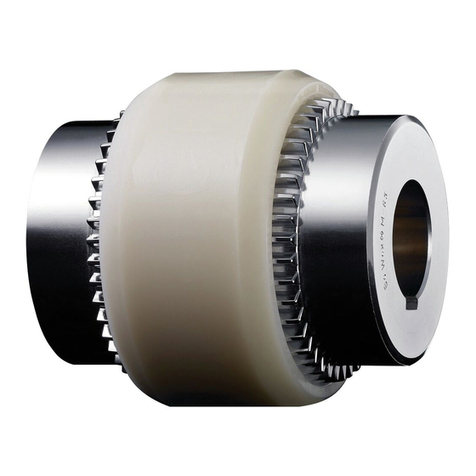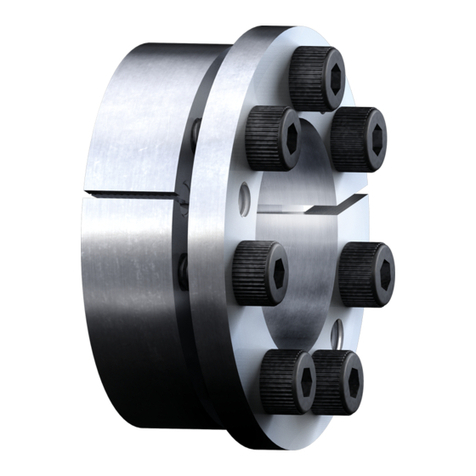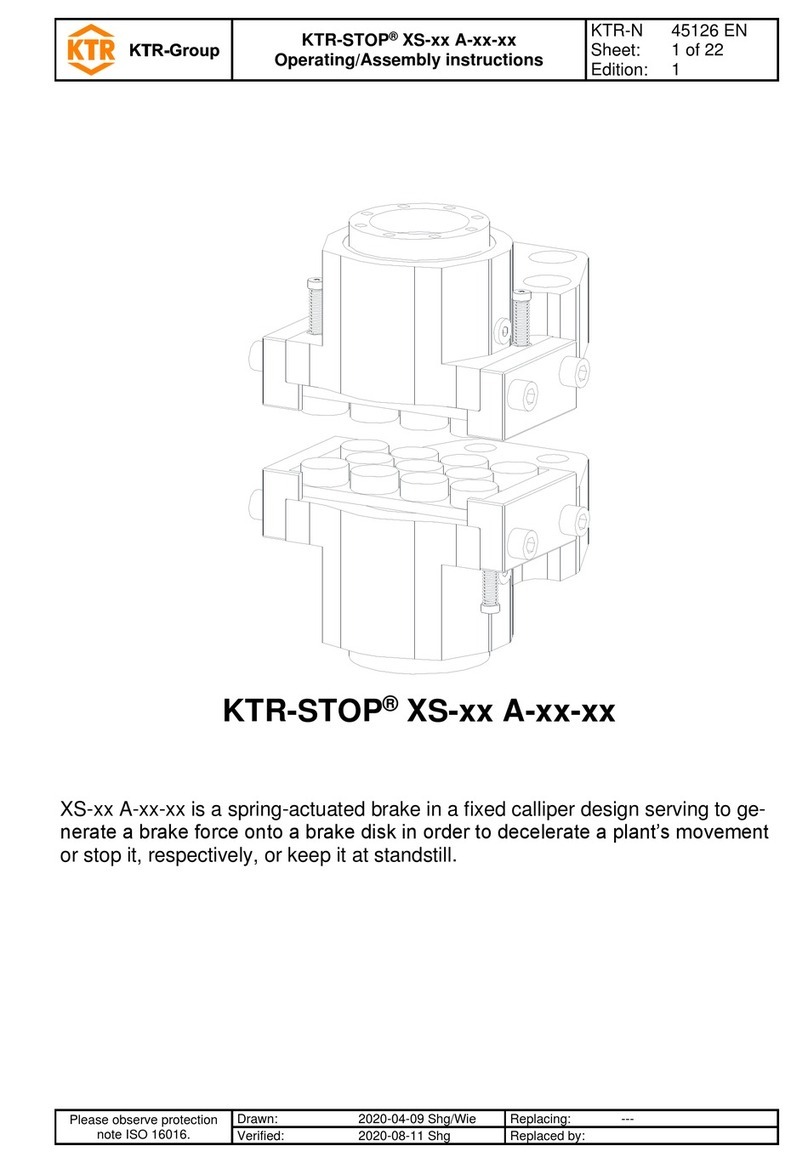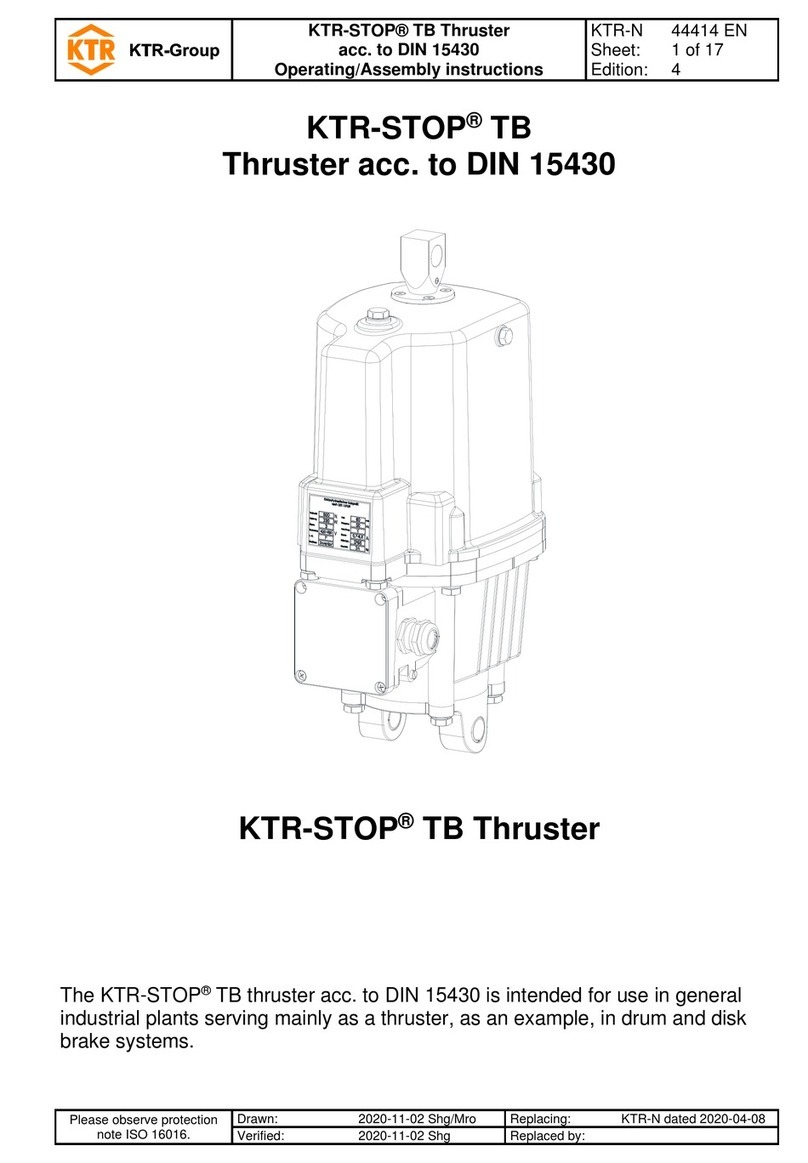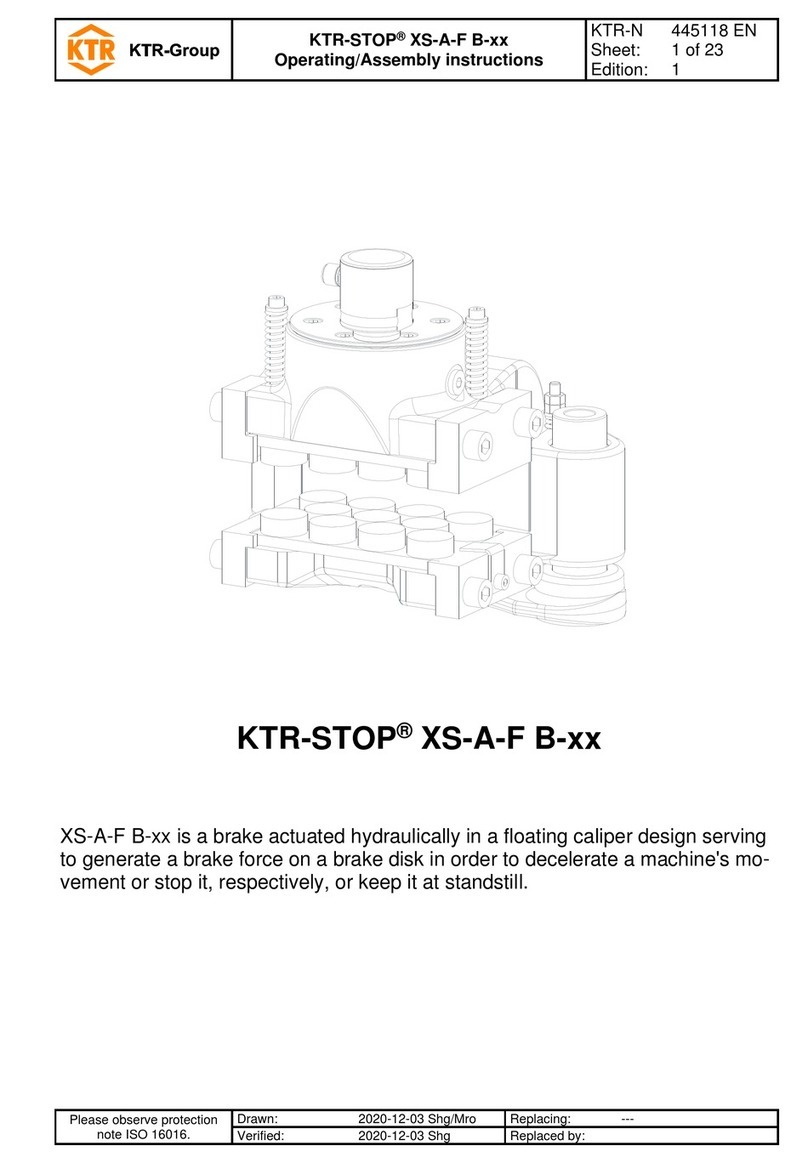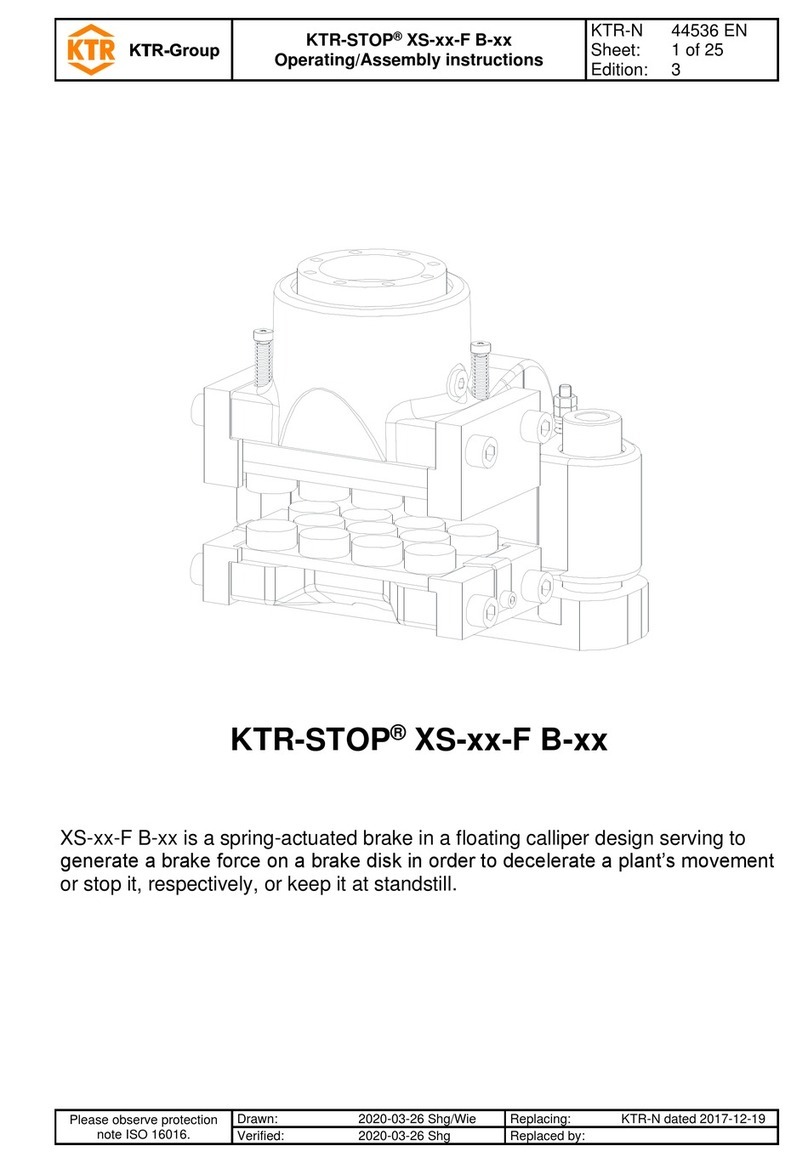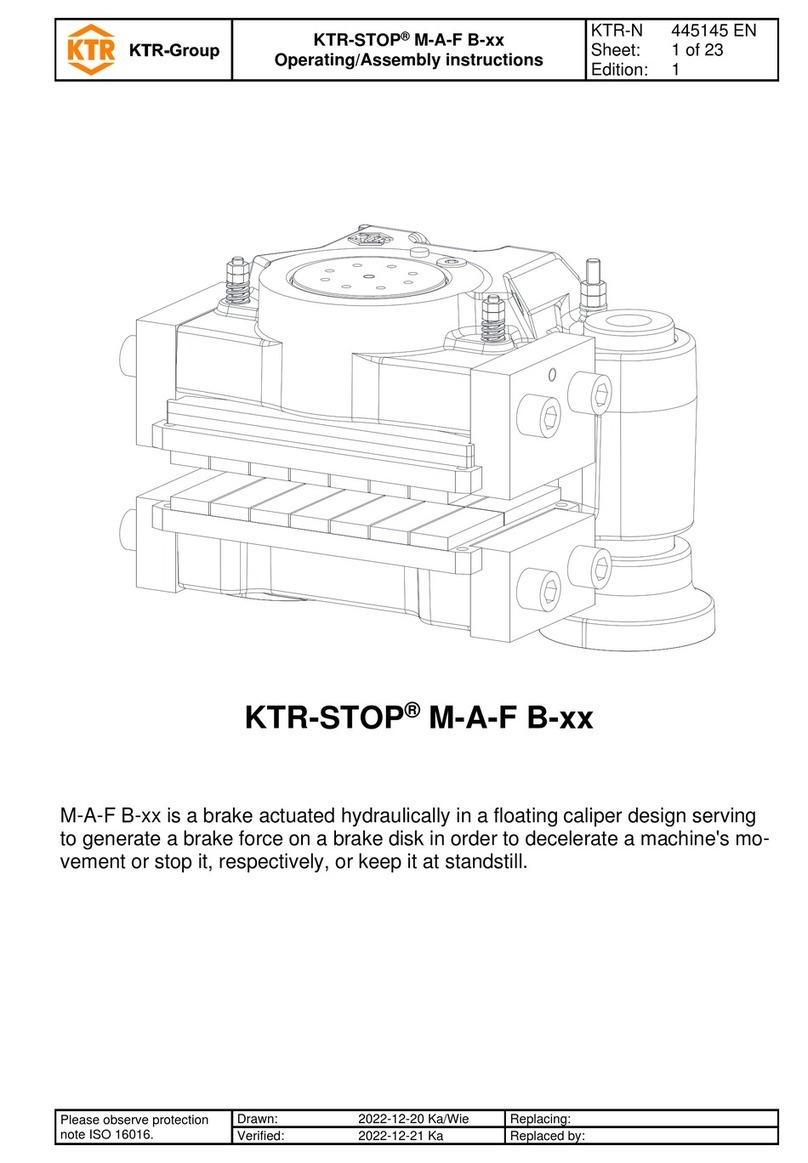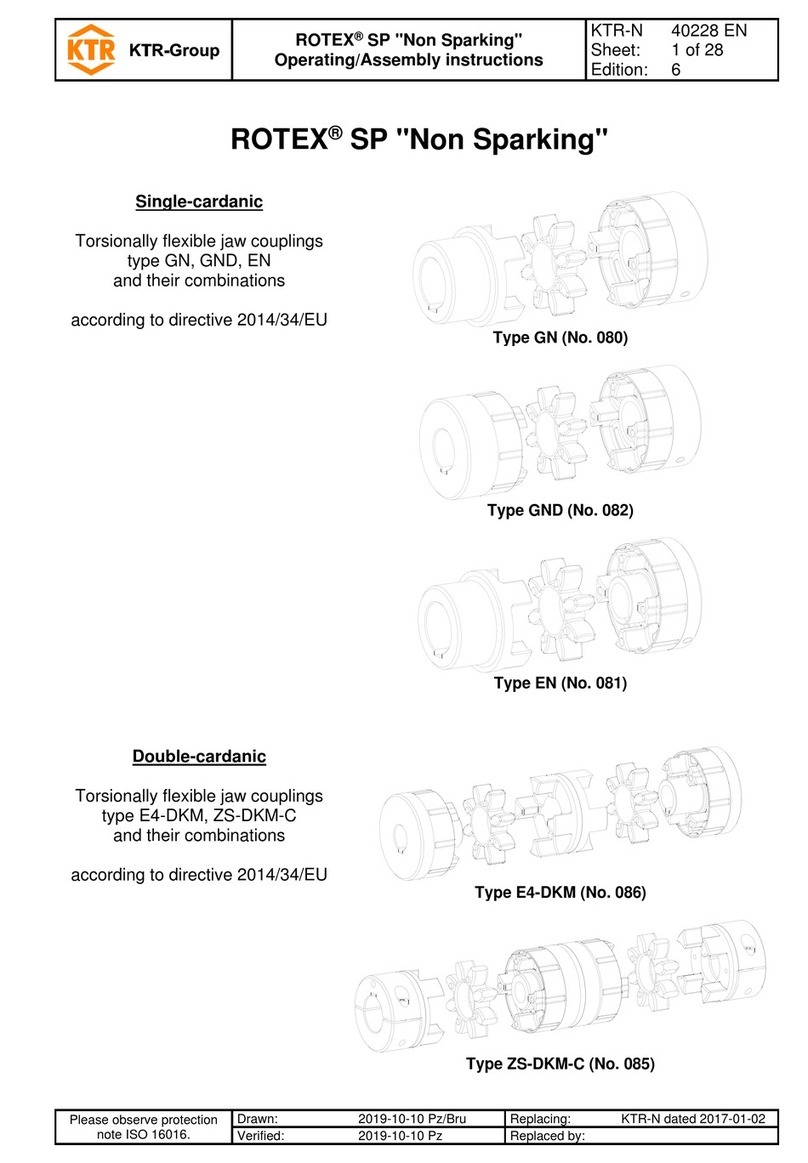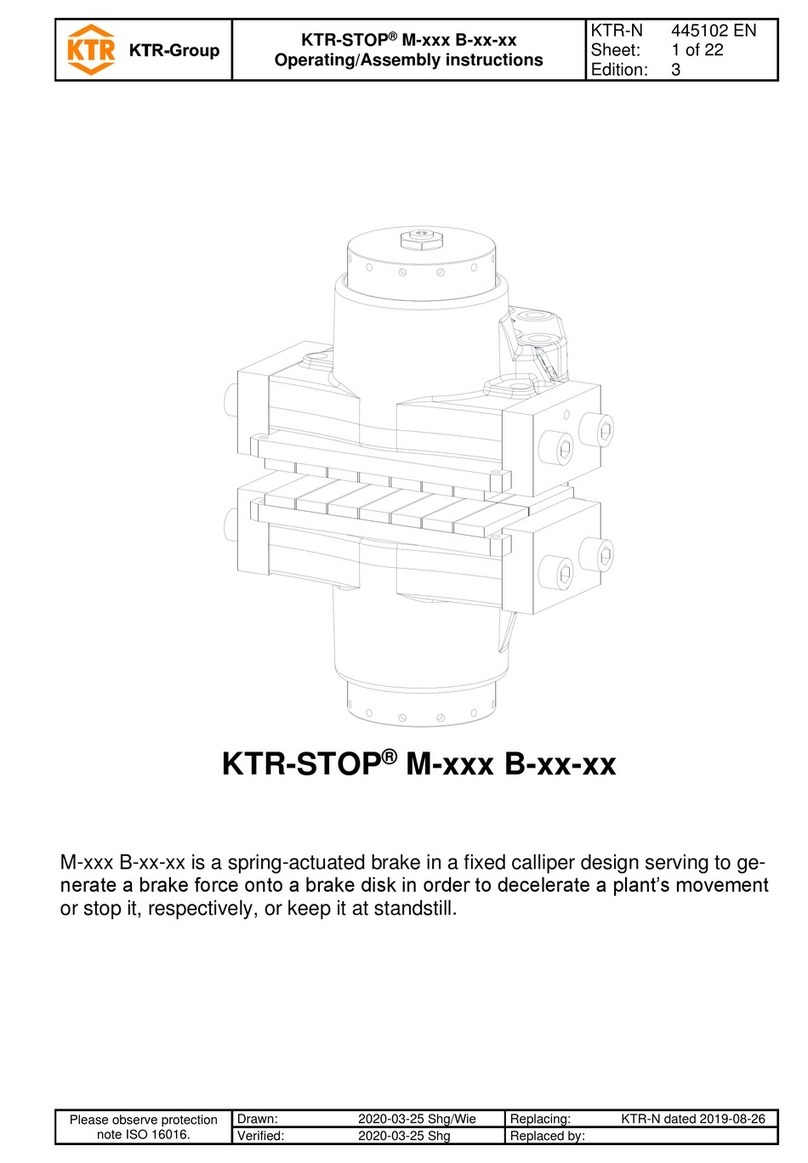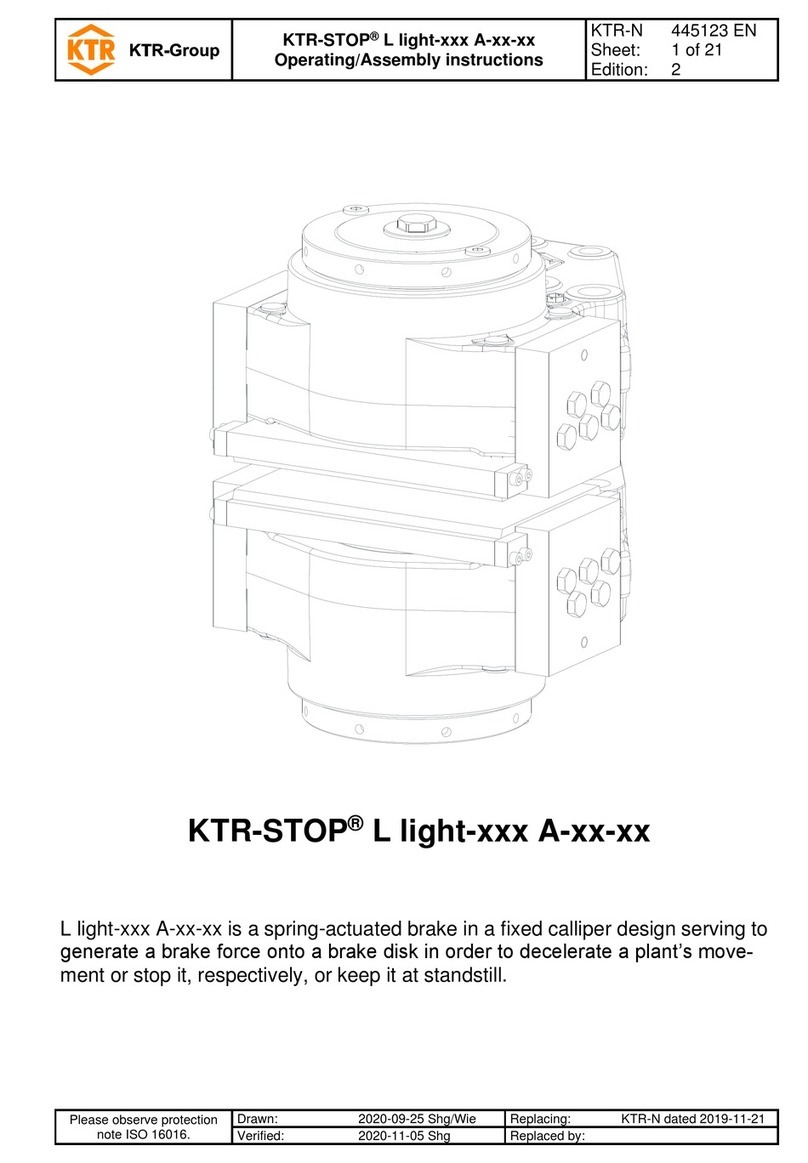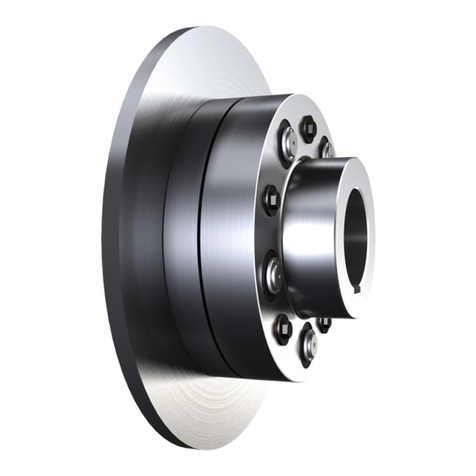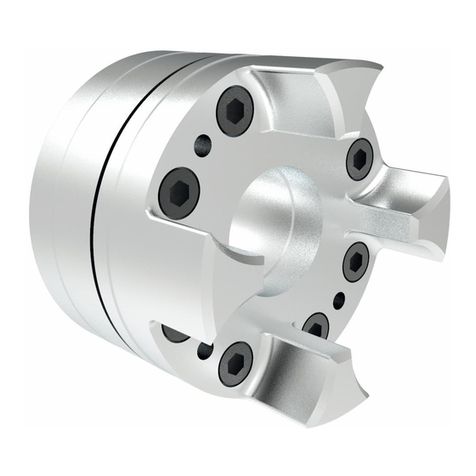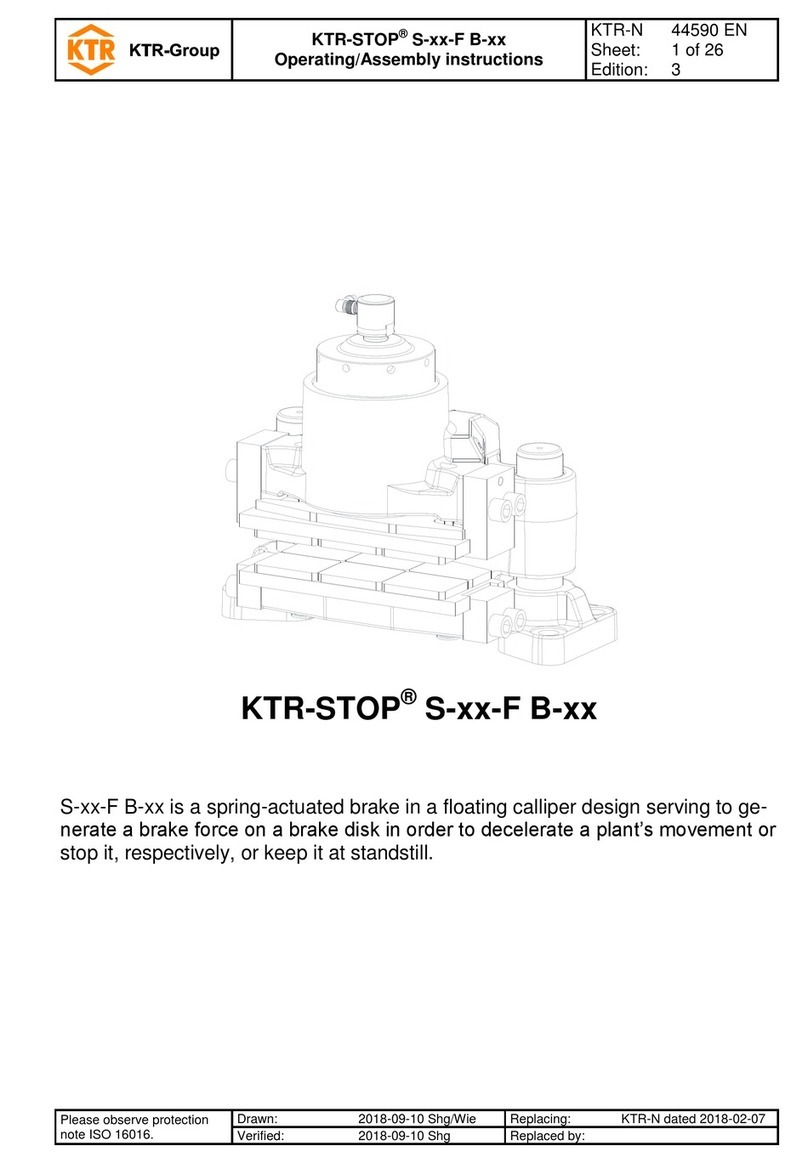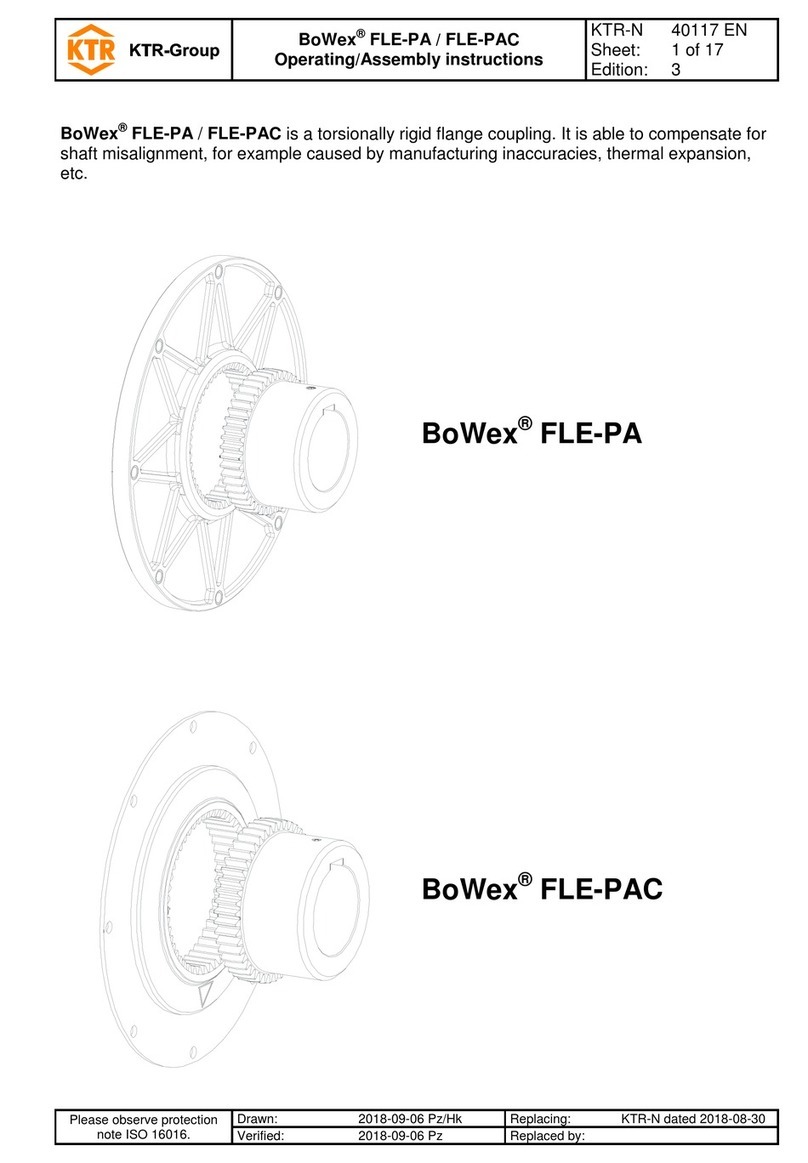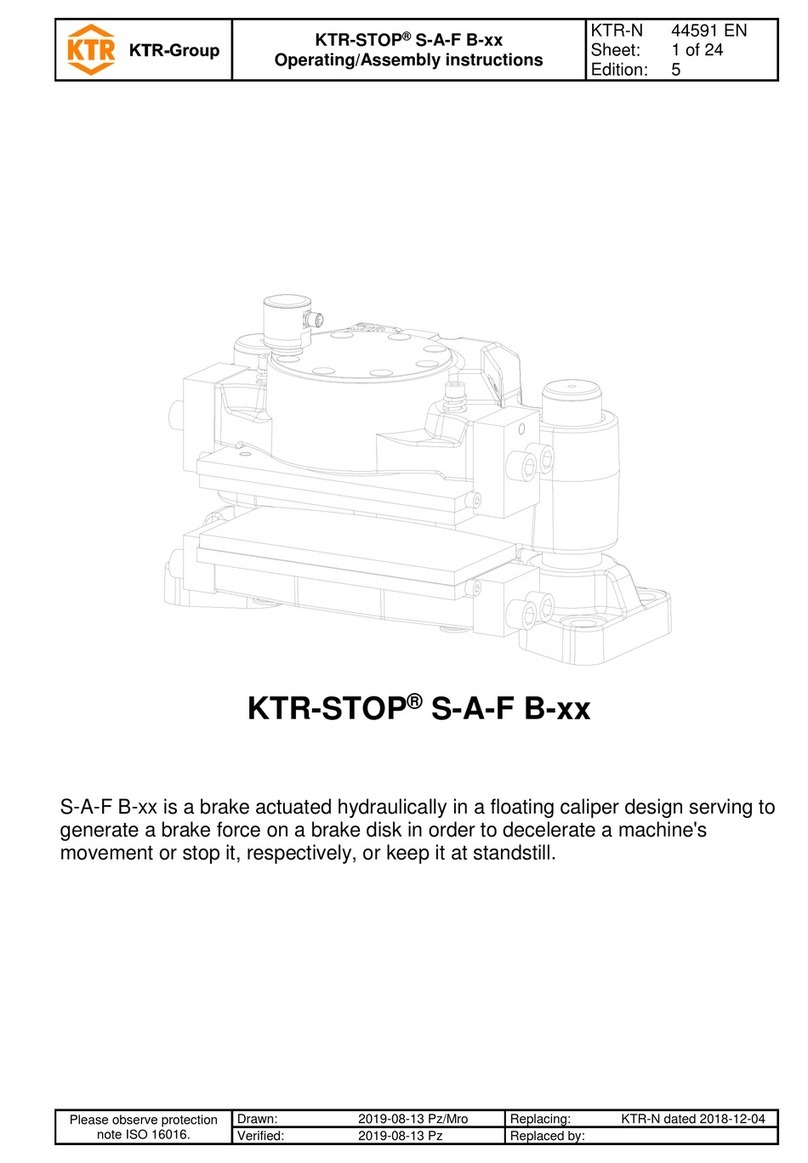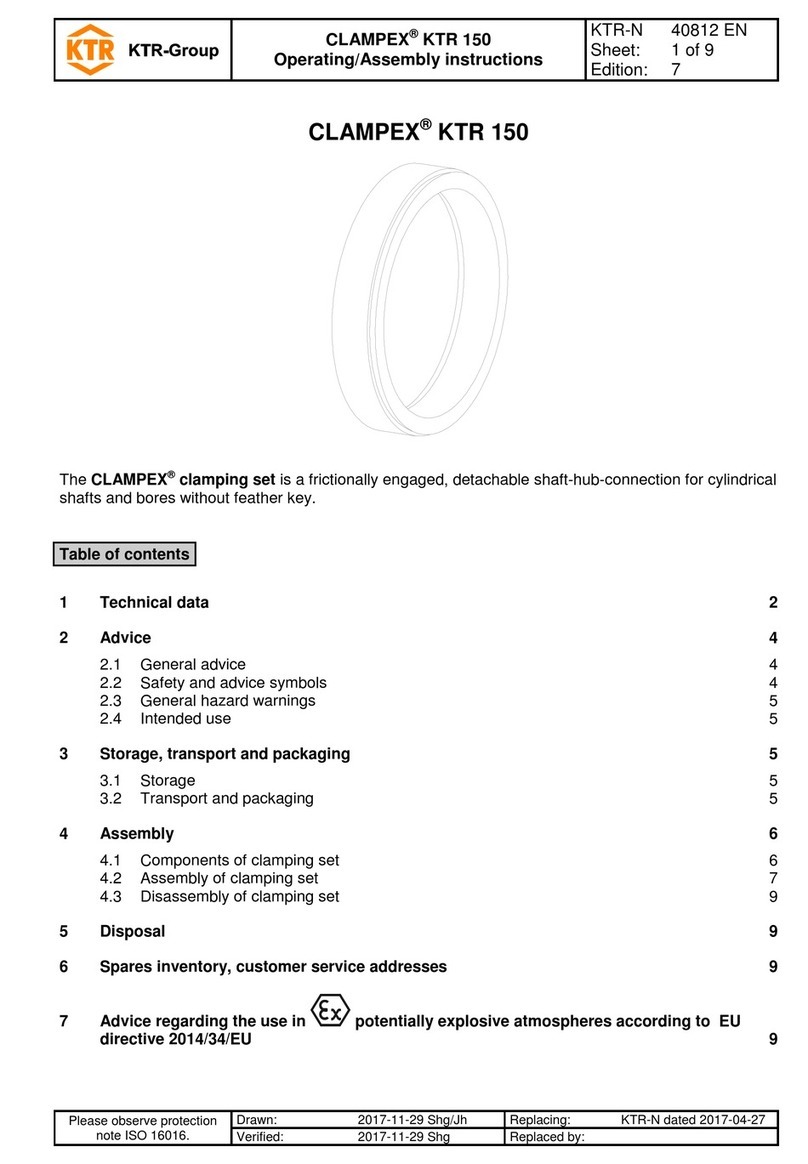
ROTEX®
Operating/Assembly instructions
Please observe protection
note ISO 16016.
For a permanent and failure-free operation of the coupling it must be selected according to
the selection instructions (according to DIN 740 part 2) for the particular application (see
catalogue drive technology "ROTEX®").
If the operating conditions (performance, speed, modifications on engine and machine)
change, the coupling selection must be reviewed.
Please make sure that the technical data regarding torque refer to the spider only. The
transmittable torque of the shaft-hub-connection must be reviewed by the customer and is
subject to his responsibility.
For drives subject to torsional vibrations (drives with cyclic stress due to torsional vibrations) it is necessary to
perform a torsional vibration calculation to ensure a reliable selection. Typical drives subject to torsional vibrations
are e. g. drives with diesel engines, piston pumps, piston compressors etc. If requested, KTR will perform the
coupling selection and the torsional vibration calculation.
The couplings supplied by KTR should be considered as components, not machines or partly completed
machines according to EC Machinery Directive 2006/42/EC. Consequently KTR does not have to issue a
declaration of incorporation. For details about safe assembly, start-up and safe operation please refer to the
present operating/assembly instructions considering the warnings.
The coupling hubs are supplied in preserved condition and can be stored at a dry and covered place for 6 - 9
months.
The features of the coupling spiders (elastomers) remain unchanged for up to 5 years with favourable storage
conditions.
The storage rooms must not include any ozone-generating devices like e. g. fluorescent
light sources, mercury-vapour lamps or electrical high-voltage appliances.
Humid storage rooms are not suitable.
Please make sure that condensation is not generated. The best relative air humidity is less
than 65 %.
In order to avoid any injuries and any kind of damage please always make use of proper
transport and lifting equipment.
The couplings are packed differently each depending on size, number and kind of transport. Unless otherwise
contractually agreed, packaging will follow the in-house packaging specifications of KTR.
2.6 Reference to EC Machinery Directive 2006/42/EC
3 Storage, transport and packaging
3.2 Transport and packaging
